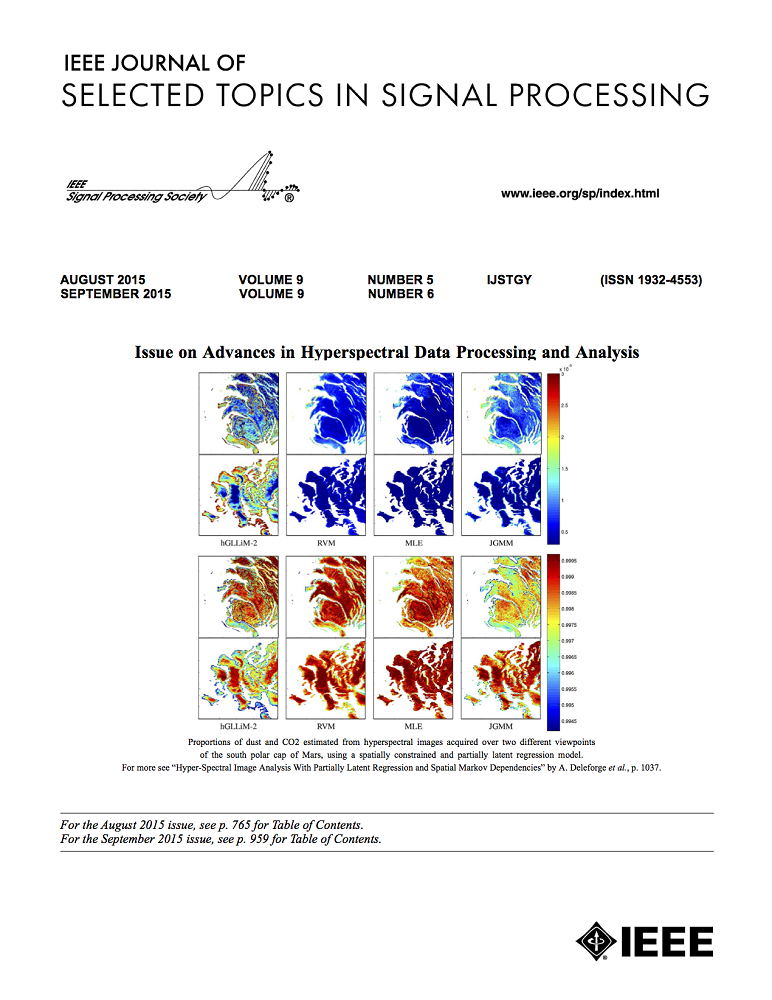Transferability of coVariance Neural Networks
IF 8.7
1区 工程技术
Q1 ENGINEERING, ELECTRICAL & ELECTRONIC
IEEE Journal of Selected Topics in Signal Processing
Pub Date : 2024-03-28
DOI:10.1109/JSTSP.2024.3378887
引用次数: 0
Abstract
Graph convolutional networks (GCN) leverage topology-driven graph convolutional operations to combine information across the graph for inference tasks. In our recent work, we have studied GCNs with covariance matrices as graphs in the form of coVariance neural networks (VNNs) and shown that VNNs draw similarities with traditional principal component analysis (PCA) while overcoming its limitations regarding instability. In this paper, we focus on characterizing the transferability of VNNs. The notion of transferability is motivated from the intuitive expectation that learning models could generalize to “compatible” datasets (i.e., datasets of different dimensionalities describing the same domain) with minimal effort. VNNs inherit the scale-free data processing architecture from GCNs and here, we show that VNNs exhibit transferability of performance (without re-training) over datasets whose covariance matrices converge to a limit object. Multi-scale neuroimaging datasets enable the study of the brain at multiple scales and hence, provide an ideal scenario to validate the transferability of VNNs. We first demonstrate the quantitative transferability of VNNs over a regression task of predicting chronological age from a multi-scale dataset of cortical thickness features. Further, to elucidate the advantages offered by VNNs in neuroimaging data analysis, we also deploy VNNs as regression models in a pipeline for “brain age” prediction from cortical thickness features. The discordance between brain age and chronological age (“brain age gap”) can reflect increased vulnerability or resilience toward neurological disease or cognitive impairments. The architecture of VNNs allows us to extend beyond the coarse metric of brain age gap and associate anatomical interpretability to elevated brain age gap in Alzheimer's disease (AD). We leverage the transferability of VNNs to cross validate the anatomical interpretability offered by VNNs to brain age gap across datasets of different dimensionalities.共变异神经网络的可移植性
图卷积网络(GCN)利用拓扑驱动的图卷积操作,将整个图中的信息结合起来,完成推理任务。在最近的工作中,我们以共方差神经网络(VNN)的形式研究了具有协方差矩阵图的 GCN,结果表明 VNN 与传统的主成分分析(PCA)有相似之处,同时克服了其在不稳定性方面的局限性。在本文中,我们将重点描述 VNN 的可转移性。可迁移性的概念源于一种直观的期望,即学习模型能以最小的代价推广到 "兼容 "数据集(即描述同一领域的不同维度数据集)。VNN 继承了 GCN 的无标度数据处理架构,在此,我们展示了 VNN 在协方差矩阵收敛到极限对象的数据集上表现出的性能可迁移性(无需重新训练)。多尺度神经成像数据集可对大脑进行多尺度研究,因此为验证 VNN 的可迁移性提供了理想的场景。我们首先展示了 VNN 在从多尺度皮层厚度特征数据集预测年代年龄的回归任务中的定量可转移性。此外,为了阐明 VNN 在神经成像数据分析中的优势,我们还在根据皮层厚度特征预测 "脑年龄 "的管道中部署了 VNN 作为回归模型。脑年龄与实际年龄的不一致("脑年龄差距")可反映出神经系统疾病或认知障碍的脆弱性或恢复力的增加。VNN 的结构使我们能够超越脑龄差距的粗略度量,将解剖学上的可解释性与阿尔茨海默病(AD)中脑龄差距的增大联系起来。我们利用 VNN 的可转移性,在不同维度的数据集上交叉验证了 VNN 对脑年龄差距的解剖可解释性。
本文章由计算机程序翻译,如有差异,请以英文原文为准。
求助全文
约1分钟内获得全文
求助全文
来源期刊

IEEE Journal of Selected Topics in Signal Processing
工程技术-工程:电子与电气
CiteScore
19.00
自引率
1.30%
发文量
135
审稿时长
3 months
期刊介绍:
The IEEE Journal of Selected Topics in Signal Processing (JSTSP) focuses on the Field of Interest of the IEEE Signal Processing Society, which encompasses the theory and application of various signal processing techniques. These techniques include filtering, coding, transmitting, estimating, detecting, analyzing, recognizing, synthesizing, recording, and reproducing signals using digital or analog devices. The term "signal" covers a wide range of data types, including audio, video, speech, image, communication, geophysical, sonar, radar, medical, musical, and others.
The journal format allows for in-depth exploration of signal processing topics, enabling the Society to cover both established and emerging areas. This includes interdisciplinary fields such as biomedical engineering and language processing, as well as areas not traditionally associated with engineering.
 求助内容:
求助内容: 应助结果提醒方式:
应助结果提醒方式:


